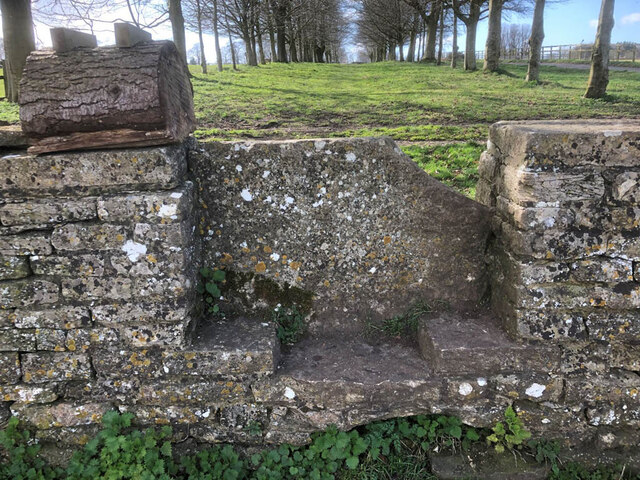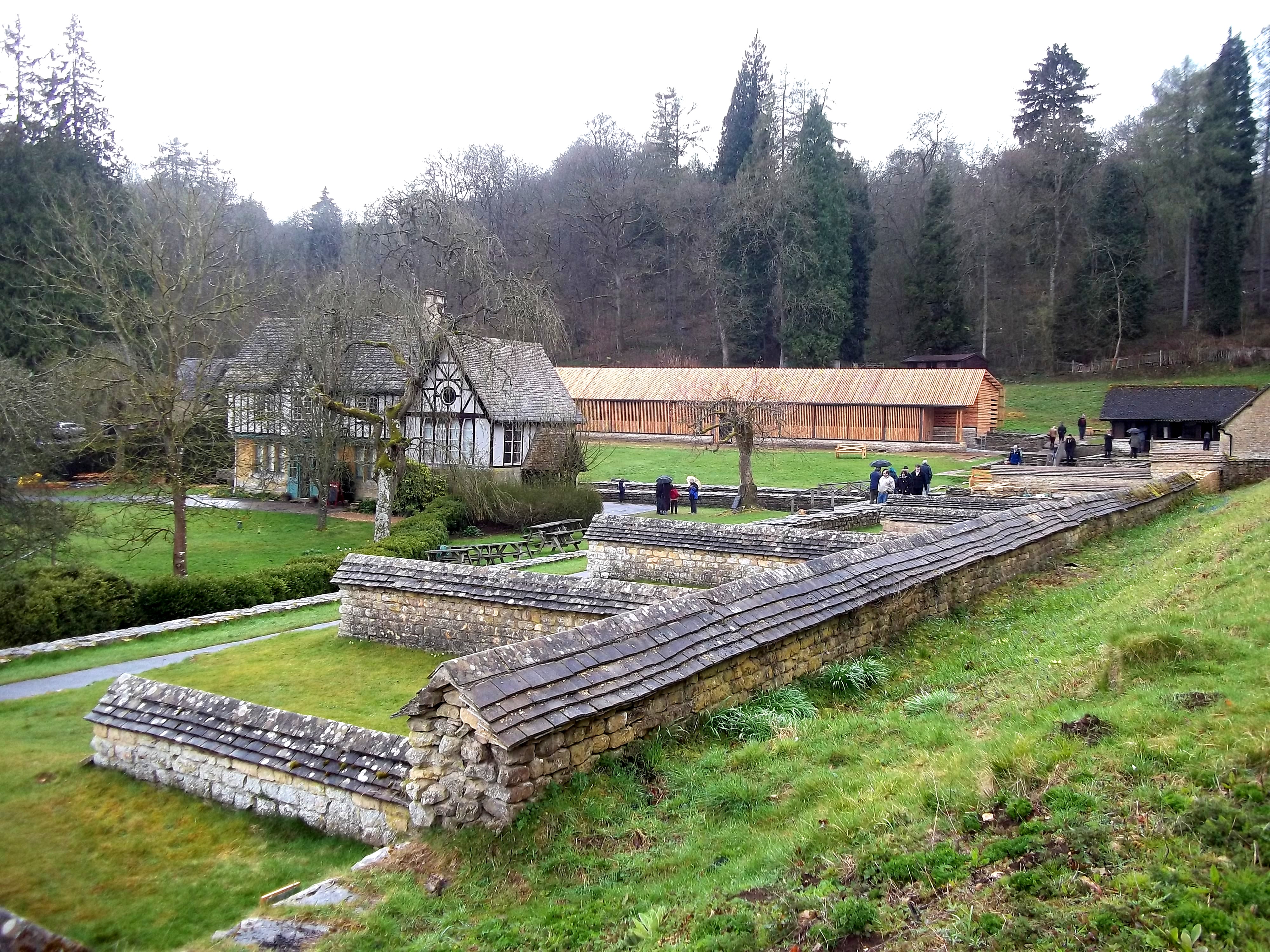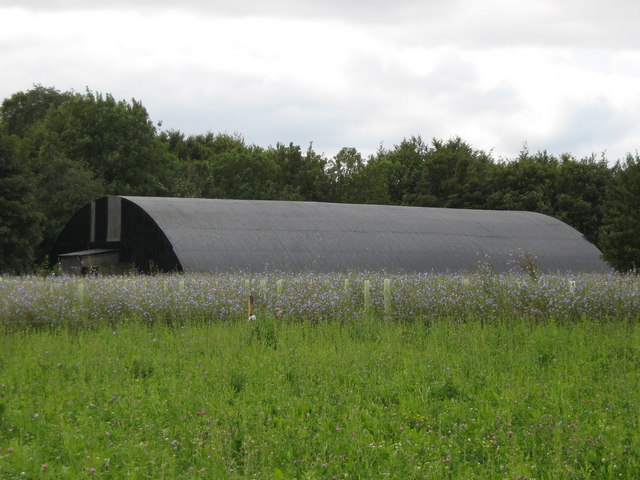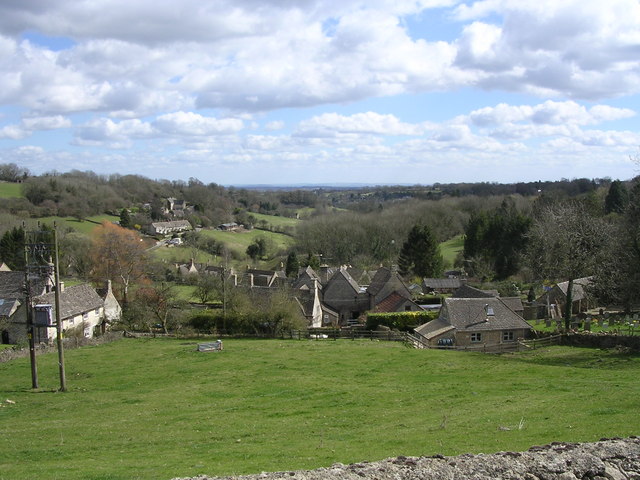Chedworth Woods
Wood, Forest in Gloucestershire Cotswold
England
Chedworth Woods
![Chedworth Roman Villa [1] The modern building houses a museum and café.
Chedworth Roman Villa is a large and elaborate Roman villa and was occupied well beyond the Roman period. Built in phases from the 2nd century to the 5th century, it was an elite dwelling around three sides of a courtyard. The villa is in the care of the National Trust. The site is a Scheduled Ancient Monument with details at: <span class="nowrap"><a title="https://historicengland.org.uk/listing/the-list/list-entry/1003324" rel="nofollow ugc noopener" href="https://historicengland.org.uk/listing/the-list/list-entry/1003324">Link</a><img style="margin-left:2px;" alt="External link" title="External link - shift click to open in new window" src="https://s1.geograph.org.uk/img/external.png" width="10" height="10"/></span>](https://s0.geograph.org.uk/geophotos/07/00/02/7000224_98f9701d.jpg)
Chedworth Woods is a picturesque woodland located in the county of Gloucestershire, England. Covering an area of approximately 200 acres, it is nestled within the beautiful Cotswolds region, renowned for its stunning natural landscapes. The wood is situated near the village of Chedworth, which is known for its Roman villa and attracts visitors from far and wide.
Chedworth Woods is predominantly composed of native deciduous trees, such as oak, beech, and ash, which create a diverse and vibrant ecosystem. The woodland floor is adorned with a rich carpet of bluebells during the spring, adding a burst of color to the surroundings. In addition to the trees and flowers, the wood is home to a variety of wildlife, including birds, deer, and squirrels.
The woodland offers a tranquil retreat for nature enthusiasts and outdoor enthusiasts alike. It boasts a network of well-maintained footpaths and trails that allow visitors to explore the area at their own pace. These paths wind through the dense woodland, offering breathtaking views and opportunities for wildlife spotting.
Chedworth Woods is also noted for its historical significance. It contains remnants of ancient woodland that date back hundreds of years, providing a glimpse into the area's past. The wood has been carefully managed to preserve its natural beauty and ensure the protection of its wildlife.
Overall, Chedworth Woods is a haven for those seeking solace in nature. Its idyllic setting, diverse flora and fauna, and rich history make it a popular destination for locals and tourists alike, providing a true taste of the English countryside.
If you have any feedback on the listing, please let us know in the comments section below.
Chedworth Woods Images
Images are sourced within 2km of 51.819945/-1.9334049 or Grid Reference SP0413. Thanks to Geograph Open Source API. All images are credited.
![Chedworth Roman Villa [1] The modern building houses a museum and café.
Chedworth Roman Villa is a large and elaborate Roman villa and was occupied well beyond the Roman period. Built in phases from the 2nd century to the 5th century, it was an elite dwelling around three sides of a courtyard. The villa is in the care of the National Trust. The site is a Scheduled Ancient Monument with details at: <span class="nowrap"><a title="https://historicengland.org.uk/listing/the-list/list-entry/1003324" rel="nofollow ugc noopener" href="https://historicengland.org.uk/listing/the-list/list-entry/1003324">Link</a><img style="margin-left:2px;" alt="External link" title="External link - shift click to open in new window" src="https://s1.geograph.org.uk/img/external.png" width="10" height="10"/></span>](https://s0.geograph.org.uk/geophotos/07/00/02/7000224_98f9701d.jpg)
![Chedworth Roman Villa [2] The villa is located next to a natural spring, around which was later built an apsidal shrine to the water-nymphs.
Chedworth Roman Villa is a large and elaborate Roman villa and was occupied well beyond the Roman period. Built in phases from the 2nd century to the 5th century, it was an elite dwelling around three sides of a courtyard. The villa is in the care of the National Trust. The site is a Scheduled Ancient Monument with details at: <span class="nowrap"><a title="https://historicengland.org.uk/listing/the-list/list-entry/1003324" rel="nofollow ugc noopener" href="https://historicengland.org.uk/listing/the-list/list-entry/1003324">Link</a><img style="margin-left:2px;" alt="External link" title="External link - shift click to open in new window" src="https://s1.geograph.org.uk/img/external.png" width="10" height="10"/></span>](https://s2.geograph.org.uk/geophotos/07/00/02/7000226_fb90f89b.jpg)
![Chedworth Roman Villa [3] Part of the remains of the bath house.
Chedworth Roman Villa is a large and elaborate Roman villa and was occupied well beyond the Roman period. Built in phases from the 2nd century to the 5th century, it was an elite dwelling around three sides of a courtyard. The villa is in the care of the National Trust. The site is a Scheduled Ancient Monument with details at: <span class="nowrap"><a title="https://historicengland.org.uk/listing/the-list/list-entry/1003324" rel="nofollow ugc noopener" href="https://historicengland.org.uk/listing/the-list/list-entry/1003324">Link</a><img style="margin-left:2px;" alt="External link" title="External link - shift click to open in new window" src="https://s1.geograph.org.uk/img/external.png" width="10" height="10"/></span>](https://s1.geograph.org.uk/geophotos/07/00/02/7000229_2c96be80.jpg)
![Chedworth Roman Villa [4] The plaque describes this as &#039;a multi-purpose heated room&#039;.
Chedworth Roman Villa is a large and elaborate Roman villa and was occupied well beyond the Roman period. Built in phases from the 2nd century to the 5th century, it was an elite dwelling around three sides of a courtyard. The villa is in the care of the National Trust. The site is a Scheduled Ancient Monument with details at: <span class="nowrap"><a title="https://historicengland.org.uk/listing/the-list/list-entry/1003324" rel="nofollow ugc noopener" href="https://historicengland.org.uk/listing/the-list/list-entry/1003324">Link</a><img style="margin-left:2px;" alt="External link" title="External link - shift click to open in new window" src="https://s1.geograph.org.uk/img/external.png" width="10" height="10"/></span>](https://s3.geograph.org.uk/geophotos/07/00/02/7000231_9496d21a.jpg)
![Chedworth Roman Villa [5] One of the mosaic floors.
Chedworth Roman Villa is a large and elaborate Roman villa and was occupied well beyond the Roman period. Built in phases from the 2nd century to the 5th century, it was an elite dwelling around three sides of a courtyard. The villa is in the care of the National Trust. The site is a Scheduled Ancient Monument with details at: <span class="nowrap"><a title="https://historicengland.org.uk/listing/the-list/list-entry/1003324" rel="nofollow ugc noopener" href="https://historicengland.org.uk/listing/the-list/list-entry/1003324">Link</a><img style="margin-left:2px;" alt="External link" title="External link - shift click to open in new window" src="https://s1.geograph.org.uk/img/external.png" width="10" height="10"/></span>](https://s0.geograph.org.uk/geophotos/07/00/02/7000232_d57fa5a8.jpg)
![Chedworth Roman Villa [6] Part of a mosaic floor with the hypocaust underneath.
Chedworth Roman Villa is a large and elaborate Roman villa and was occupied well beyond the Roman period. Built in phases from the 2nd century to the 5th century, it was an elite dwelling around three sides of a courtyard. The villa is in the care of the National Trust. The site is a Scheduled Ancient Monument with details at: <span class="nowrap"><a title="https://historicengland.org.uk/listing/the-list/list-entry/1003324" rel="nofollow ugc noopener" href="https://historicengland.org.uk/listing/the-list/list-entry/1003324">Link</a><img style="margin-left:2px;" alt="External link" title="External link - shift click to open in new window" src="https://s1.geograph.org.uk/img/external.png" width="10" height="10"/></span>](https://s1.geograph.org.uk/geophotos/07/00/02/7000233_2a376324.jpg)











Chedworth Woods is located at Grid Ref: SP0413 (Lat: 51.819945, Lng: -1.9334049)
Administrative County: Gloucestershire
District: Cotswold
Police Authority: Gloucestershire
What 3 Words
///crumb.rush.magic. Near Northleach, Gloucestershire
Nearby Locations
Related Wikis
Chedworth Roman Villa
Chedworth Roman Villa is located near Chedworth, Gloucestershire, England and is a scheduled monument. It is one of the largest and most elaborate Roman...
RAF Chedworth
Royal Air Force Chedworth or more simply RAF Chedworth is a former Royal Air Force satellite station located near Chedworth, Gloucestershire, England....
Chedworth Nature Reserve
Chedworth Nature Reserve (grid reference SP048143) is a 6-hectare (15-acre) nature reserve in Gloucestershire. The site is listed in the 'Cotswold District...
Church of St Andrew, Chedworth
The Anglican Church of St Andrew at Chedworth in the Cotswold District of Gloucestershire, England was built in the late 12th century. It is a grade I...
Chedworth
Chedworth is a village and civil parish in Gloucestershire, southwest England, in the Cotswolds. It is known as the location of Chedworth Roman Villa,...
Chedworth Halt railway station
Chedworth Halt railway station was on the Midland and South Western Junction Railway in Gloucestershire. The station opened on 1 October 1892, 14 months...
Church of St Michael, Withington
The Anglican Church of St Michael at Withington in the Cotswold District of Gloucestershire, England was built in the 12th century. It is a grade I listed...
Withington, Gloucestershire
Withington is a Cotswold village and civil parish in Gloucestershire, England, about 7 miles (11 km) southeast of Cheltenham and 8 miles (13 km) north...
Have you been to Chedworth Woods?
Leave your review of Chedworth Woods below (or comments, questions and feedback).








